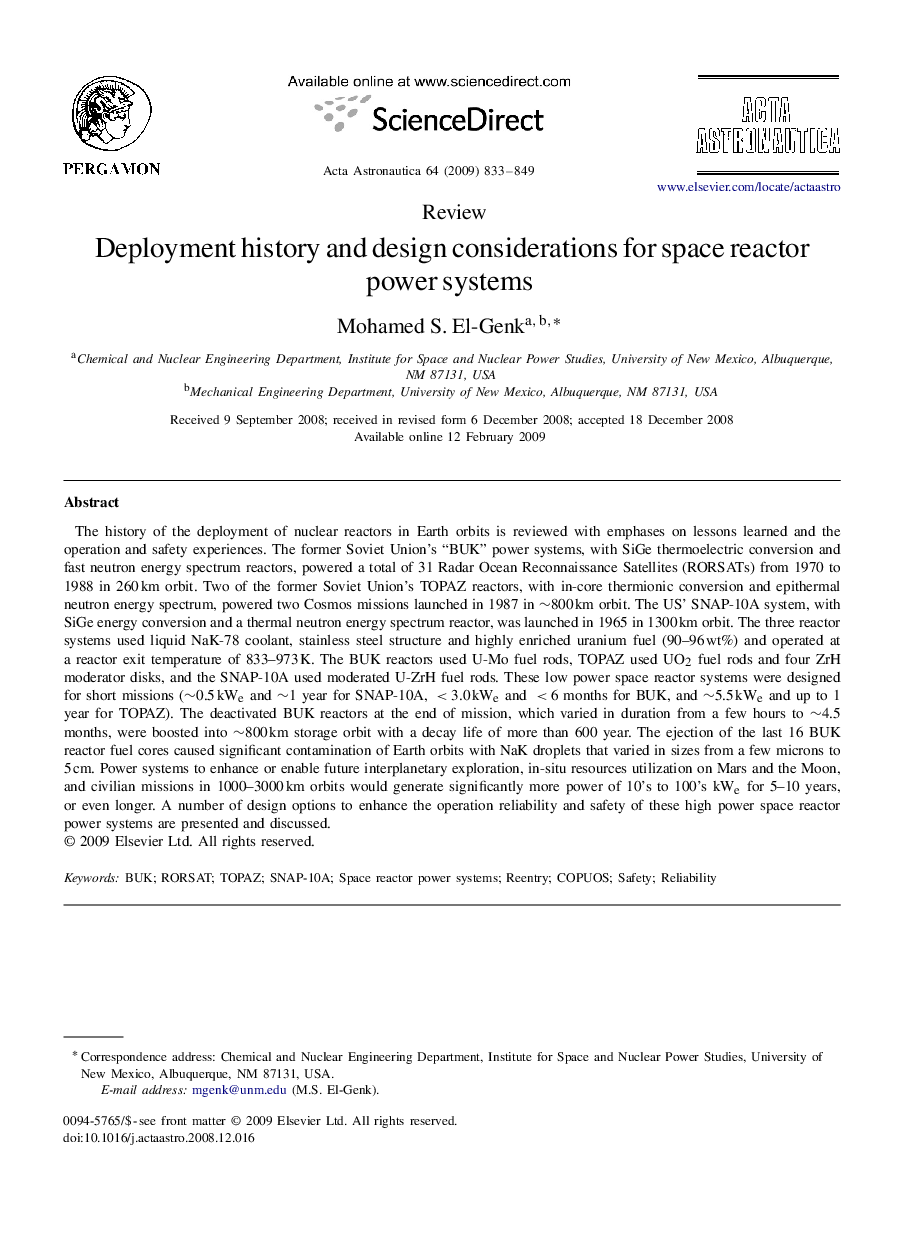| کد مقاله | کد نشریه | سال انتشار | مقاله انگلیسی | نسخه تمام متن |
|---|---|---|---|---|
| 1716600 | 1520010 | 2009 | 17 صفحه PDF | دانلود رایگان |

The history of the deployment of nuclear reactors in Earth orbits is reviewed with emphases on lessons learned and the operation and safety experiences. The former Soviet Union's “BUK” power systems, with SiGe thermoelectric conversion and fast neutron energy spectrum reactors, powered a total of 31 Radar Ocean Reconnaissance Satellites (RORSATs) from 1970 to 1988 in 260 km orbit. Two of the former Soviet Union's TOPAZ reactors, with in-core thermionic conversion and epithermal neutron energy spectrum, powered two Cosmos missions launched in 1987 in ∼800 km orbit. The US’ SNAP-10A system, with SiGe energy conversion and a thermal neutron energy spectrum reactor, was launched in 1965 in 1300 km orbit. The three reactor systems used liquid NaK-78 coolant, stainless steel structure and highly enriched uranium fuel (90–96 wt%) and operated at a reactor exit temperature of 833–973 K. The BUK reactors used U-Mo fuel rods, TOPAZ used UO2 fuel rods and four ZrH moderator disks, and the SNAP-10A used moderated U-ZrH fuel rods. These low power space reactor systems were designed for short missions (∼0.5 kWe and ∼1 year for SNAP-10A, <3.0 kWe and <6 months for BUK, and ∼5.5 kWe and up to 1 year for TOPAZ). The deactivated BUK reactors at the end of mission, which varied in duration from a few hours to ∼4.5 months, were boosted into ∼800 km storage orbit with a decay life of more than 600 year. The ejection of the last 16 BUK reactor fuel cores caused significant contamination of Earth orbits with NaK droplets that varied in sizes from a few microns to 5 cm. Power systems to enhance or enable future interplanetary exploration, in-situ resources utilization on Mars and the Moon, and civilian missions in 1000–3000 km orbits would generate significantly more power of 10's to 100's kWe for 5–10 years, or even longer. A number of design options to enhance the operation reliability and safety of these high power space reactor power systems are presented and discussed.
Journal: Acta Astronautica - Volume 64, Issues 9–10, May–June 2009, Pages 833–849